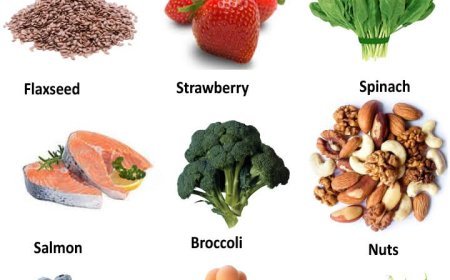A guide to tropic levels and specialized diets
In the intricate tapestry of life, organisms are fundamentally defined by what they consume. This forms the basis of trophic levels, illustrating the flow of energy through ecosystems.

Beyond the familiar distinctions of herbivores, carnivores, and omnivores, the natural world boasts a fascinating array of specialized feeders, each with unique adaptations that allow them to thrive in their ecological niches.
1. Herbivores: The Primary Consumers
Herbivores are organisms that feed exclusively on plants, plant products (like fruits, seeds, or nectar), or algae. As primary consumers, they form the crucial link between producers (plants) and the rest of the food chain. Their digestive systems and anatomy are often highly specialized for processing fibrous plant matter.
Examples: Cows, deer, elephants, rabbits, butterflies, pandas.
2. Carnivores: The Meat Eaters
Carnivores are animals that primarily or exclusively consume other animals (meat). They occupy higher trophic levels as secondary or tertiary consumers, depending on whether they eat herbivores or other carnivores. They possess adaptations like sharp teeth, strong jaws, and claws, essential for hunting and tearing flesh.
Examples: Lions, wolves, eagles, sharks, seals.
3. Omnivores: The Versatile Eaters
Omnivores have a mixed diet, consuming both plants and animals. This dietary flexibility can be a significant advantage, allowing them to adapt to diverse environments and fluctuating food availability. Their anatomy, including their teeth and digestive systems, reflects their varied diet.
Examples: Humans, bears (most species), raccoons, pigs, crows.
Specialized Eaters and Beyond the Core
The animal kingdom showcases even more nuanced feeding strategies that are critical for ecosystem health:
4. Detritivores: The Debris Eaters
Detritivores feed on detritus, which is non-living organic matter such as decaying plants and animals, feces, or other waste products. They are vital for breaking down dead material into smaller fragments, playing a key role in nutrient cycling.
Examples: Earthworms, millipedes, woodlice, dung beetles.
5. Decomposers: The Recyclers
Decomposers break down dead organic matter and waste into simpler inorganic compounds, returning essential nutrients to the ecosystem. Unlike detritivores, decomposers primarily break down matter externally through enzymatic processes before absorbing the nutrients. They are the ultimate recyclers.
Examples: Bacteria, fungi (e.g., mushrooms, molds).
6. Scavengers: The Opportunistic Clean-Up Crew
Scavengers are animals that primarily feed on the carcasses of dead animals they did not kill themselves. They are a type of carnivore or omnivore that specializes in consuming carrion, helping to clean up ecosystems.
Examples: Vultures, hyenas, jackals, some crows.
Further Specializations: A Closer Look
Within the broad categories, further specializations highlight the incredible diversity of dietary adaptations:
Specialized Herbivores (by Plant Part)
Frugivores: Primarily eat fruits (e.g., orangutans, toucans).
Folivores: Primarily eat leaves (e.g., koalas, gorillas).
Graminivores (Grazers): Primarily eat grasses (e.g., cows, zebras).
Browsers: Primarily eat leaves, twigs, and bark from shrubs and trees (e.g., giraffes, deer).
Granivores: Primarily eat seeds (e.g., squirrels, many birds like finches).
Nectarivores: Primarily eat nectar from flowers, often acting as pollinators (e.g., hummingbirds, bees).
Palynivores: Primarily eat pollen (e.g., bees).
Mucivores: Primarily eat plant fluids like sap (e.g., aphids).
Xylophages: Primarily eat wood (e.g., termites, some beetles).
Specialized Carnivores (by Prey Type)
Insectivores: Primarily eat insects (e.g., anteaters, shrews, many birds).
Piscivores: Primarily eat fish (e.g., ospreys, seals, polar bears).
Avivores: Primarily eat birds (e.g., falcons, some hawks).
Sanguivores (Hematophages): Primarily consume blood (e.g., mosquitoes, vampire bats).
Vermivores: Primarily eat worms (e.g., moles, robins).
Ophiophages: Primarily eat snakes (e.g., mongoose, king cobra).
Molluscivores: Primarily eat mollusks (e.g., sea otters, some birds).
Levels of Carnivory
Carnivores can also be classified by the proportion of meat in their diet:
Obligate Carnivores (Hypercarnivores): Rely almost entirely (70% or more) on animal flesh.
Examples: Cats (lions, domestic cats), polar bears.
Mesocarnivores: Meat makes up 50-70% of their diet, with the rest being plant matter or fungi.
Examples: Foxes, raccoons, badgers.
Hypocarnivores: Meat makes up less than 30% of their diet, meaning they are primarily omnivorous with a significant plant component.
Examples: Most bear species, humans.
These diverse feeding strategies and adaptations underscore the remarkable complexity and interconnectedness of ecosystems, where every organism plays a unique and vital role in the grand cycle of energy and nutrients.
What's Your Reaction?
 Like
0
Like
0
 Dislike
0
Dislike
0
 Love
0
Love
0
 Funny
0
Funny
0
 Angry
0
Angry
0
 Sad
0
Sad
0
 Wow
0
Wow
0





















